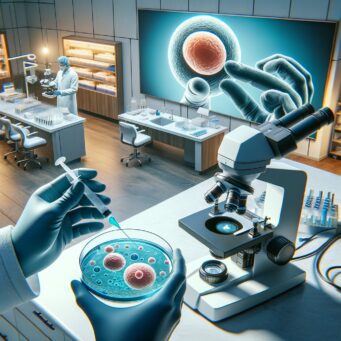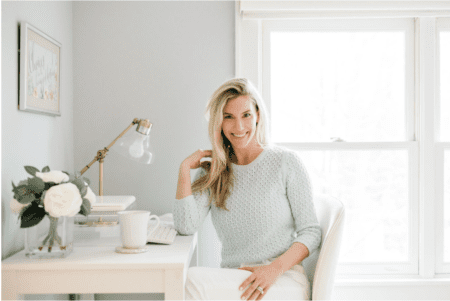
“We didn’t find any sperm.” The words from the nurse on the phone left me breathless.
I tried repeating them to make sure I heard what I heard, but there was no sound.
“Are you there?” the nurse asked.
Through my sobbing I said I was fine. I asked if there was a mistake, a mix-up, something else she could tell me that would make this all untrue.
She replied, clearly concerned, “I’m so, so sorry.”
It was 2013 when we found out my husband was infertile. My doctor suggested that my husband get tested after it was confirmed that there were no issues with my fertility.
My husband’s diagnosis explained five years of negative pee tests and sent our perfect world spiraling into imperfection. Being strong in our faith, it was hard for us to fathom that we would not “be fruitful and multiply.”
As African Americans, the idea that my husband did not produce sperm was unfathomable. Infertility was something no one had ever talked with us about. It seemed everyone in our whole world was able to get pregnant naturally. So, I would not accept that my husband did not have even one sperm! Zero? I just couldn’t wrap my mind around it.
When the doctor walked in, I got excited until I heard: ‘We didn’t find any sperm.’ I fell to the floor. I felt so much failure. I couldn’t believe it. The diagnosis felt like a punishment, a death sentence. Having a baby seemed like the natural progression after marriage.
The nurse referred us to a urologist who suggested that the sperm may be “hidden” and recommended a testicular biopsy in hopes of locating some sperm that we could use for IVF. It was a weird concept to me, that sperm for our baby could play hide-and-seek, but I was willing to play the game in order to become a mommy.
The time in the waiting room during the procedures felt like hours, but I was hopeful. When the doctor walked in, I got excited until I heard: “We didn’t find any sperm.” I fell to the floor. I felt so much failure. I couldn’t believe it.
The diagnosis felt like a punishment, a death sentence. Having a baby seemed like the natural progression after marriage. That’s why I couldn’t understand–why me, why him, why us? In 24 hours, my pride was crushed, again. I lost my hope for the future and was told by my husband that I couldn’t tell anyone about our struggle.
I was angry at my husband, at God, and at the world. Days after his biopsy, I watched my husband seem to die in front of me, though he was still breathing. He was so detached—going through the motions, but not appearing present. I wanted to be strong for him, but I had nothing to give.
Though our devastation divided us and brought us to the brink of divorce, we stuck together, persevered through a lot more heartache and confusion, and found our way to family in an unexpected way—adoption.
I had wanted to experience pregnancy and even looked into processes such as donor sperm. This would have allowed us to still do IVF, but, I did not want to carry someone else’s child in my body. I wanted to carry my husband’s child that we made together.
After IVF was no longer an option, the phrase “just adopt” was on everyone’s lips. But, really—people acted like we could go to a store, pick a baby up off the shelf, pay, and be parents.
Though it was far from easy, adoption did seem at the time like the only option, and we explored it.
Our first stop was adoption through the state. How shocked were we to find that if we wanted a baby immediately, we would have to take a special needs child or sibling group of three or more children. Or, we could get on a three-year waiting list just for the hope of getting an infant. I was baffled. On the news every day we heard about babies needing parents, so we were confused and saddened when they said the wait could be years long.
Although we were skeptical about it all, we moved forward with a home study. Again, we had to lick our wounds. We were denied by the state because we have an in-ground cement pool in our backyard. And, although our yard is fenced in, they wanted us to put an additional four-foot fence around the pool before they would approve us to adopt. Again, we were shocked. We were a loving family, with strong community support, an awesome home, and the financial stability to fulfill a child’s wants and desires…and a pool kept us from even being considered? I was angry. Who knew the adoption system was so broken!
After IVF was no longer an option, the phrase “just adopt” was on everyone’s lips. But, really—people acted like we could go to a store, pick a baby up off the shelf, pay, and be parents. Though it was far from easy, adoption did seem at the time like the only option, and we explored it.
When that failed, we tried the foster-to-adoption process. I was skeptical because I had heard the stories about people having to return children to unfit parents or family members coming out of the abyss to claim the child. But we moved forward with it anyway, only to be told at the last moment that the grandmother of the child we were seeking to adopt “now does want to take the child.” My anger turned to devastation.
We took a break. We needed a break. We felt like the world was against us.
After about three months we were able to refocus and explored embryo adoption, embryo adoption with surrogacy, and agency adoption. While both types of embryo adoption would allow me to experience pregnancy, I again was not a fan of carrying someone else’s child.
Though surrogacy and agency adoption were almost guaranteed to make us parents, what was not guaranteed was how we were going to finance it all. My husband didn’t really want to tell anyone about his issues, and we did not want to deplete all of our savings to have a baby. We needed that money to take care of the child when he or she entered the world.
After going to several meetings and having endless phone calls with agencies, we gave up. We struggled with the idea that we would have to literally spend our life savings to pay for something that was supposed to be such a natural process, and there was no guarantee that at the end of it all we would have a baby. It seemed so unfair. I had to face the reality that I might never be a mommy. I also had to find some way to be okay with that—that we would never see a person in our likeness, let alone have somebody to hold in my arms as my own. I felt desperate in my desire to be a mother, but there was nothing I could do.
I poured my sorrows into my journal, which later turned into a book about my struggles as a wife supporting a husband through male-factor infertility. The book ended with me not having a baby, but the ending was symbolic as it marked the beginning of us taking an active step towards being okay with living our lives child free.
It had been five years since we found out my husband was infertile which made a total of almost 10 years of us being unable to conceive a child. While I had all but let go of our dream of becoming parents, my faith would not let me give up on the “impossible” possibility or the miracle that although my husband had zero sperm, we would somehow have a baby.
In 2018, we made the decision to go ahead and do one final home study for adoption. We decided we would use a small, local, non-profit adoption agency to help us instead of going with a big agency. I declared to my husband that if we were to be parents, I wanted, no I needed, 2018 to end with our having a baby. I also made it clear to the heavens that I wanted the process to be effortless.
Fast forward to one week after we finished our home study, and a friend of mine who had adopted called me, screaming into the phone, “We have a baby!”
I said: “You all are adopting another child?” She calmed down and told me that I had baby. The attorney that she used for adoption had a pregnant mom that was looking for a family for her daughter. Though the news of the possibility would make the average person excited, we had had so many setbacks, I felt heavy, figuring that there would be more of the same.
Yet because my friend was so sure this was our baby, I told my husband, and we met with the birth mom. The initial conversation went great, but we were concerned about the risks. We had heard a birth mom in private adoptions could ask for crazy demands or get all the way to the end and decide she wanted to keep the baby, and we could not get any money back. However, this mom only wanted her general necessities covered.
Though hesitant, we decided to move forward. Although the anticipation, anxiety, and fear of the next few months kept us up at night, we maintained open communication with the birth mom. She repeatedly assured us that she was not going to change her mind, that the baby she was carrying was ours.
My husband summed it up by saying that it was so amazing to him that a person could look at 10 pages of our life and decide that we were deserving to have a child that she had carried for nine months. It was an honor. We were so humbled.
In January 2019, the first time I held my daughter, I felt the rush of emotions from the past five years. I watched my husband break down and sob when she was laid on his chest. All of it felt like an out-of-body experience. The many tears I had cried, the despair he had felt, and the suffering we had endured were not wasted. Here we were holding our impossible possible. She was my faith walking and my confirmation that we could go from zero chances and zero sperm to a healthy baby.
Contributor
TJ Peyten
TJ Peyten is a Georgia native with a mission to raise awareness about male-factor infertility. After several years of coping with her husband’s infertility, she decided to share their story with the world through her book Semen Secrets: Truths and Confessions of a Wife's Journey Through Male Infertility.

Listen to stories, share your own, and get feedback from the community.


















